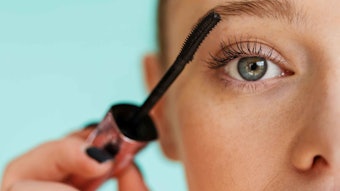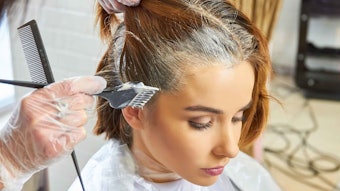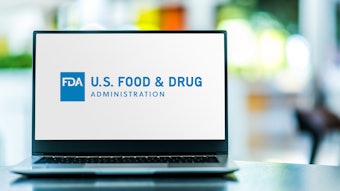The personal care industry has experienced growing consumer interest in the ingredients its products contain. This interest has resulted in better responsibility and safety among cosmetic manufacturers; however, it also has produced elevated concerns over potentially harmful ingredients.
On Oct. 11, 2007, the Campaign for Safe Cosmetics (CSC) sent out a press release claiming that 61% of the 33 lipsticks it tested contained detectable levels of lead. The Personal Care Products Council, formerly the Cosmetic, Toiletry, and Fragrance Association, responded to the CSC’s claims, stating that lead is naturally found in air, water and soil, and that the small traces found in lipstick were completely safe. Nonetheless, consumers picked up on the report and were alarmed; and the lawsuits began.
Ken Kliebard, a partner at the law firm Howrey LLP and a product liability expert, witnessed an influx of class action lawsuits against cosmetic manufacturers claiming injury from unsafe levels of lead in lipstick. Here, he explains why such lawsuits can be filed based on little evidence.
Although an arduous task for consumers, filing such suits is possible. This underlines clearly the importance of communication, from understanding the ingredients used in a formula and their safety implications, to marketing the right message about what a product can do.
Class Action Suit Defined
A class action lawsuit is first filed with one or several plaintiffs on behalf of a proposed class. In the lipstick cases, individuals are suing on behalf of all citizens of the United States. “The courts have generally not been receptive to this type of case,” commented Kliebard. “The most significant obstacle is establishing that these cases should in fact be class actions.”
Second, the group of individuals suing must have suffered common injuries, which is where filing such a suit gets tricky—the plaintiffs must prove they have been injured as a result of using the product. However, according to Kliebard, individuals have used the recent cases of lead found in toys manufactured in China as support for their class action suits. “The plaintiffs have picked up on the Chinese toy lawsuits and are seeking funds for future medical monitoring,” stated Kliebard. “They are saying that they have been damaged because of exposure to unsafe levels of lead and, therefore, are suing for further damage.”
Proving Lead Exposure
Since no consumer has yet suffered personal injury from lead in lipsticks, the plaintiffs are claiming exposure to a percentage of risk, which also is difficult to prove. “[Plaintiffs] have not shown that they are sick because of lead exposure but they want the court to monitor or test their future lead levels,” explained Kliebard, adding that it has been challenging for plaintiffs to prove any regulatory violations in regard to lead traces in lipstick. “They are now trying to prove deception on the part of their states’ consumer protection laws, meaning they are trying to prove the company has the duty to disclose,” said Kliebard.
So how does a cosmetic manufacture disclose something such as lead, an ingredient that involuntarily makes its way into cosmetic products from the air, soil and water in trace amounts, when it is not mandatory and in some cases undetectable?
The best bet for a cosmetic manufacturer is to prove that the traces of lead in lipstick will not result in future injuries, something the US Food and Drug Administration (FDA) supports. “The FDA has investigated [lead in lipstick] claims and has not found a problem,” said Kliebard.
Future Suits: Be Aware
Lead in lipstick is not the only suit of which cosmetic manufacturers should be wary. According to Kliebard, emerging “blended” industries, such as cosmeceuticals and nutricosmetics, are susceptible to class action suits. “The marketing claims of these new industries make them a target for lawsuits,” commented Kliebard. For example, claiming that products can reduce weight or eliminate wrinkles could put cosmetic manufacturers at risk. However, Kliebard adds that limiting the amount of marketing hype that touts or embellishes a product’s abilities will most likely keep the court on the manufacturer’s side. “There is a fair amount of puffery that goes into marketing claims for a product,” said Kliebard. “But unless there is a large amount of it going on, the court will not penalize the company,” said Kliebard. As the adage goes, the best offense is a good defense. “First of all, it must be recognized that there will be more of these cases filed,” said Kliebard, who recommends personal care companies should carefully scruntinize marketing and advertising claims. He also recommends being cognizant of federal and state regulations.
Perhaps the best weapon of all against class action lawsuits is clear communication between the chemist, formulator, public relations department, executive, marketer and personal care company as a whole.
!['The most polluting industries, pharmaceuticals and cosmetics, will be required to pay at least [80%] of the cost for micropollutant removal...'](https://img.cosmeticsandtoiletries.com/files/base/allured/all/image/2024/01/scientist_water_monitor_sample_pollutionAdobeStock_297782139.65ba74e958d97.png?auto=format%2Ccompress&fit=crop&h=191&q=70&rect=0%2C151%2C2179%2C1227&w=340)







!['I think the biggest game-changer about [MoCRA's] ... requirement for GMPs is how it changes what it means to be adulterated,' Brandi Reinbold, senior manager of global certification for NSF International, said in this sponsored videocast. Register now to watch and learn more. It's free.](https://img.cosmeticsandtoiletries.com/files/base/allured/all/image/2023/11/NSF_Intl_Thumbnail.6554efdc29816.png?auto=format%2Ccompress&fit=crop&h=191&q=70&rect=275%2C70%2C1328%2C748&w=340)

